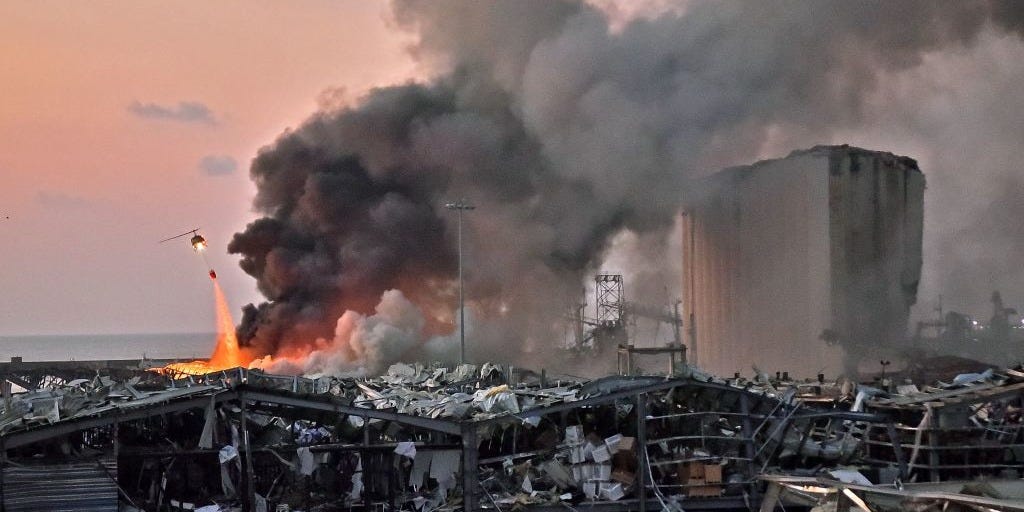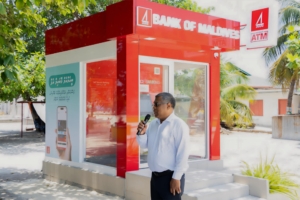The tragic disaster faced by the Lebanese was something that no one would (or even could) have predicted. It was a normal day for Lebanon. A normal day to go to work, fish, play and do many more planned activities. It was another day for Lebanese people to fight and overcome the virus, Covid-19, that has been affecting thousands around the country. But little did anyone predict, that they would be struck by a horrifying nightmare.
It was on the afternoon of 4th August, when a fire broke out in Warehouse 12, waterside at the Port of Beirut. A team of nine firefighters and a paramedic were dispatched to fight the fire at around 17:55 local time. The fire crew had reported on arrival that there was “something wrong” as the fire was huge and it had produced “a crazy sound …”
The first explosion happened at about 18:07 local time. It sent up a cloud of smoke followed by flashes of light from the fireworks that were stored in the grain silo. The grain silo was next to Warehouse 12 and had stored ammonium nitrate along with a “stash” of fireworks.

After approximately 33 to 35 seconds, a colossal second explosion occurred sending a mushroom cloud into the air and radiated a supersonic blastwave through the city. This explosion was so powerful that it destroyed the dockside area, creating a crater approximately 140m (460ft) wide, which flooded with seawater. It was also felt by people who were 240 kilometers (150 miles) away in northern Israel and in Cyprus as well. So how far worse could have the explosion been, for the two million people who lived in Beirut?
The second explosion had caused at least 171 deaths with an additional 30 to 40 people missing, and over 6,000 injuries. Among the causalities were hundreds of foreigners from at least 22 countries along with the Lebanese people. The explosion had damaged properties as far as 10 kilometers from the blast, leaving an approximate of 300,000 people homeless.

The city’s second largest grain elevator was destroyed as well, leaving the country with grain that can only be used up for a maximum of one month. The grain elevator had stored approximately 15,000 tonnes of grains.
The blast had further damaged about ninety percent of the hotels in the city along with two hospitals. Three hospitals in the city were completely destroyed from the blast. Due to the damage caused to the hospitals, several injured people that were brought to the nearby hospitals could not be admitted and treated. The second explosion had shattered windows and other installations of glass throughout the city.

One of the largest medical facilities in the city, Saint George Hospital located less than 1 kilometer from the explosion was so extremely damaged that the staffs had to treat patients in the street. The effect of the blast on the hospital caused the death of four nurses and the death of fifteen patients after their ventilators stopped working. Apart from these several child cancer patients were injured as well due to the flying glass.
The hospital’s director of intensive care, Dr. Joseph Haddad said that “There is no St. George Hospital any more. It’s fallen, it’s on the floor … It’s all destroyed. All of it.”
The city’s main airport, Beirut–Rafic Hariri International Airport that is located around 10 kilometres away from the site of the blast had sustained moderate damage to the terminal buildings due to the explosion. The doors and windows of the airport were destroyed and the ceiling tiles were shaken loose by the shockwave, severing electrical wires. Despite the damage caused to the airport, the flights still continue to operate at the airport.

According to Lebanese Red Cross, a total of 75 ambulances and 375 medics were activated in response to the explosions. Along with this, a temporary hospital was established as well in the city by the Iranian Red Crescent Society. Some of the volunteers removed debris while local business owners offered to repair damaged buildings for free in the absence of a state-sponsored cleanup operation.
The president of Lebanon, President Michel Aoun stated that the government would be making up to 100 billion pounds ($66 million) in aid to support recovery operations. Hamad Hasan, the Health Minister of Lebanon requested for international aids to which a number of countries sent in food, medical supplies, field hospitals, medical workers, and rescue teams to the country.

A large amount of countries collectively pledged to aid Lebanon with approximately $300 million. However, these money will be given to the people of Lebanon, – through the United Nations, other international organizations, and non-governmental organizations – rather than giving it to the Lebanese government.
The explosions were caused due to 2,750 tonnes of ammonium nitrate that were stored in the grain silo. The ammonium nitrate that were equivalent to around 1.2 kilotons of TNT, was confiscated from an abandoned ship by the Lebanese government and was stored in the port without proper safety measures for six years.
The director general of Lebanese Customs, Badri Daher and Mr Koraytem said that there were warnings about the danger of the stored ammonium nitrate and that the calls that were sent for it to be removed were repeatedly ignored.
“We requested that it be re-exported but that did not happen. We leave it to the experts and those concerned to determine why,” Mr Daher told broadcaster LBCI.
Although the President Aoun said that the government will be providing support to displaced people and that the Ministry of Health would meet the expense of treatment for those who are wounded, many Lebanese were unimpressed by the government’s promises of transparency and accountability. This led to dozens of protesters starting a protest against the government, on the night of 6th August, near the parliament building, calling for the resignation of Lebanese government officials.


In response to the protests, Multiple members of the Lebanese parliament resigned from their post along with the Lebanese ambassador to Jordan Tracy Chamoun. Prime minister Diab called for early elections on August 8 saying that it would be the only way for the country to exit the crisis.
The first government resignation since the explosion happened on August 9, when the the information minister of Lebanon, Manal Abdel Samad and then environment minister, Damianos Kattar resigned from their posts as well. The justice minister, Marie-Claude Najm, resigned on August 10 and later on the entire Lebanese cabinet announced their resignation as well.
Shortly after the cabinet resigned, the Prime Minister of Lebanon, Hassan Diab stepped down from the office. President Michel Aoun accepted the resignation of the government and the Prime Minister, asking the government to stay on in a caretaker capacity until a new cabinet may be formed.
“Whatever the precise charge size, this is unquestionably one of the largest non-nuclear explosions in history, far bigger than any conventional weapon,” said Professor Andy Tyas, an expert on blast protection engineering.
The Prime Minister of the country, Hassan Diab announced on that 5th August – the day after the explosions – would be considered as a national day of mourning. Furthermore, the Lebanese government had also declared a two-week state of emergency.





